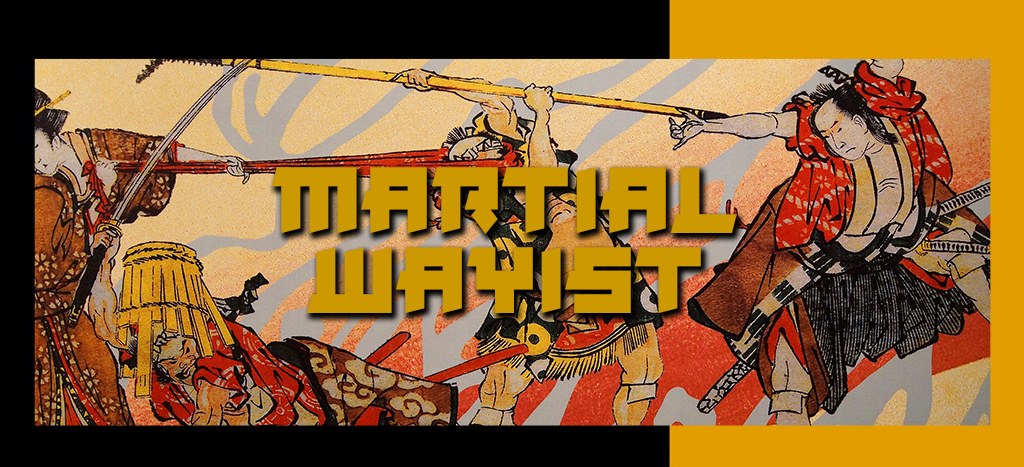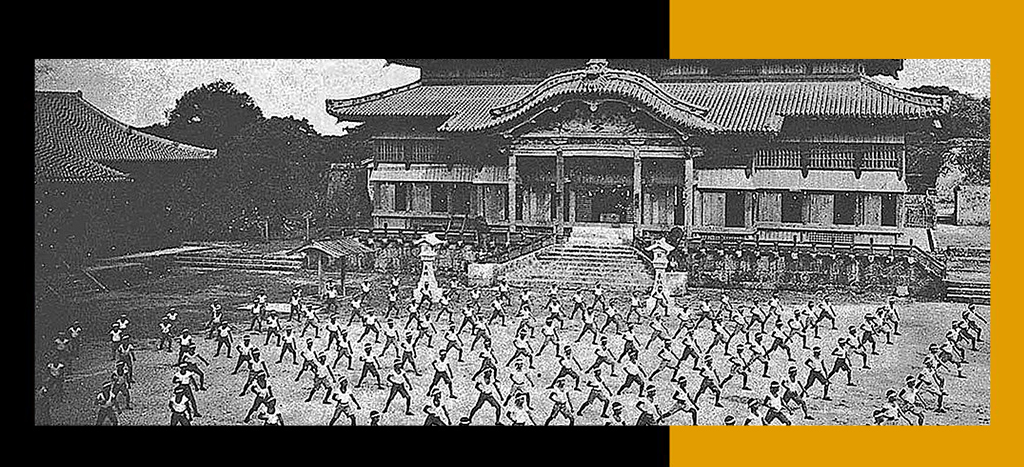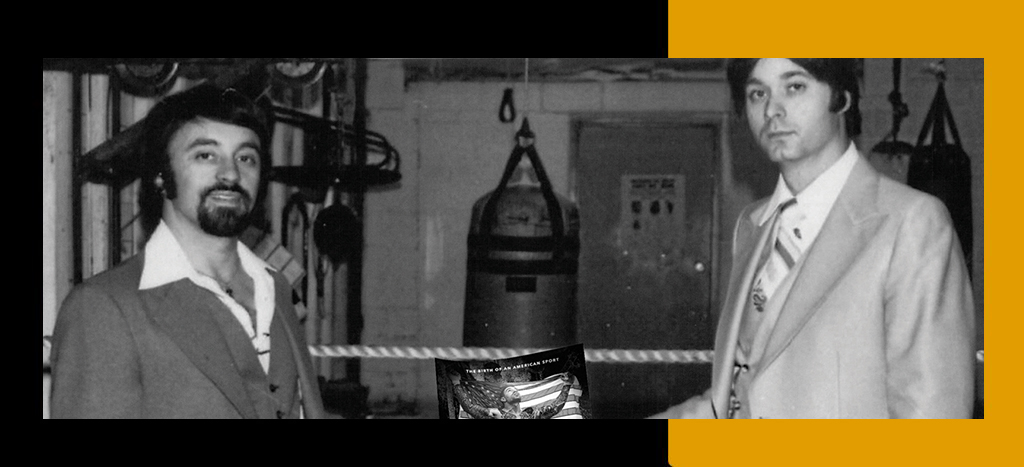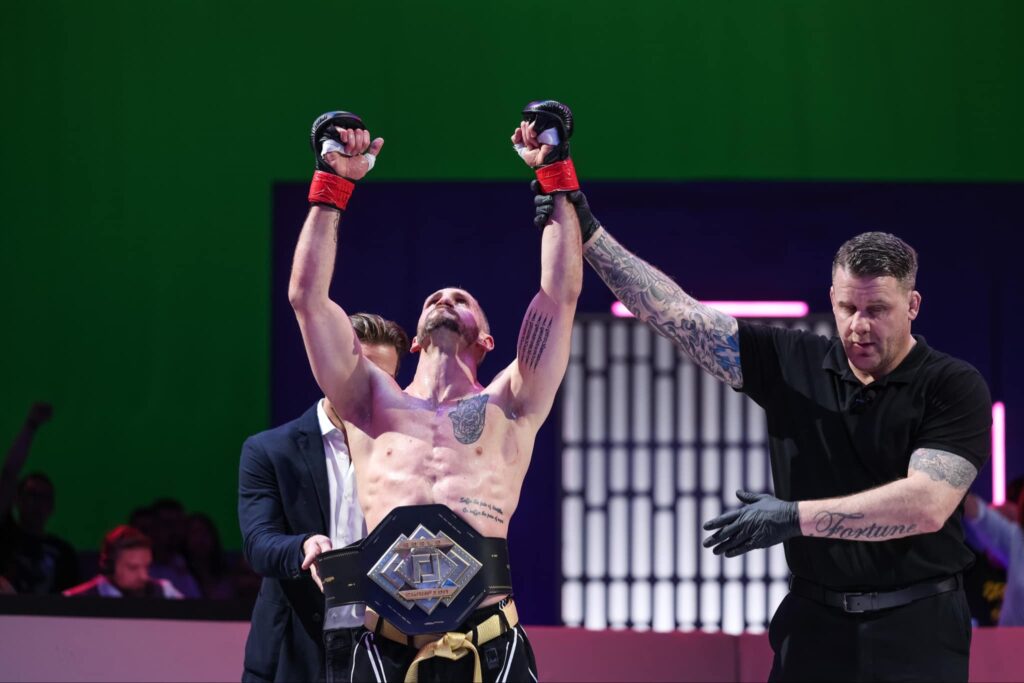Mixed “Martial” Misnomer
Martial Wayist vs Martial Artist

Fight fans witnessed the epitome of poor sportsmanship recently as Kyokushin specialist Jose “Will” Esparza lost a unanimous decision to former World Taekwondo Champion Luis Melendez during Karate Combat 47 in Orlando, Florida on June 28, 2024. Headlines read, “Karate Combat president chokes cornerman unconscious in wild brawl.” I guess if you can’t beat em’, charge the pit, and that’s what Esparza’s corner did. The bush league antics ignited a skirmish that fight fans are far too familiar with. Karate Combat president Asim Zaidi took matters into his own hands — quite literally, securing a rear-naked choke. Night-night. Kudos to Zaidi aka “President Awesome” who practices what he preaches, but how did we get to a place of such disrespect in the world of martial arts competition?
Another MMA fight; another circus. Mixed martial arts fans relish these sorts of tussles; however folks from the “traditional” martial arts community had higher hopes for Karate Combat. After all, aren’t martial artists supposed to be founded in discipline? Isn’t karate the quintessential sport of self-control. No, it’s not. Most mixed martial artists are just that, artists of war with no code. It’s by design and it’s okay. Now, before you blow a gasket, just hear me out…
Flashback to UFC 229: Khabib Nurmagomedov vs. Conor McGregor on Aug 4, 2018
A young Conor McGregor, brazen with bravado, first inspired this topic for me years ago. Fight fans cried foul following the melee that was post McGregor / Nurmagomedov. Here’s the cliff notes: Khabib submitted the irreconcilable Irishman and then proceeded to hurl himself over the Octagon, across the officials table, and into the crowd to trade blows with Dillon Danis of the McGregor camp. Chaos! It was uncharacteristic of the Russian, but predictable after the accumulation taunts and insults leading up to the clash. Social media lit up with a barrage of disgust and disdain towards the so-called “martial” behavior of the fighters and their entourages–the same people who shelled out $64.99 to watch a grudge match promoted in the same vein of Vince McMahon’s WrestleMania. Regardless, it’s a blueprint the “endeavor era” UFC has savored and profited from. Extracurricular insults of family, faith, and country (staged or not, you decide) have long been staples of the fight game, so the aftermath isn’t all that shocking. Testosterone fuels a consumer base with a penchant for bloodlust and revenge. Shock and awe fills seats and sells PPVs. It’s a dusty old playbook, but effective. Nonetheless, critics of yesteryear who chastise the most recent Karate Combat spectacle are the same who revel in the days of Tyson gnawing on Holyfield’s ear or reminisce of Larry Holmes soaring like an eagle long before Khabib, drop kicking Trevor Berbick. Such antics are notorious and part of the fabric of sports. Be it a bench clearing brawl in baseball, or two hockey enforcers dropping the gloves, the raw emotion of the moment quenches a thirst for violence.
So how is any UFC outburst or the latest Karate Combat embarrassment any different than NBA’s Ron Artest inciting the infamous Auburn Hills riot or MLB’s Roberto Alomar spitting in an umpire’s face? It isn’t, really, but ambiguity seems to surface because of the “martial arts” connotation. What “martial” is or isn’t, should or should be, is highly subjective largely due to Hollywood’s portrayal of ancient teachings in a “death before dishonor” fashion. We’ve been fed the notion that an authentic “martial art” is always respectful and disciplined, and for nearly a century, America especially, has swallowed the rhetoric. The hardcore karate of the 1960s and 1970s may have watered down with the commercialization of industry, but there is one character trait that has stood the test of time — respect. It is the universal characteristic of modern martial arts schools, and it is known as “traditional martial arts.”
Martial art is a catch-all, almost generic term, that collectively describes any combat system from around the world. In the modern era, they are commonly paired with East Asian etiquette. The umbrella covers everyone from military and police to kick boxers, grapplers, toddlers in little ninja classes, or soccer moms taking a self-defense course. It is much more than what people classify as “traditional martial arts,” but the aura of a weathered Sensei leading a class of dedicated students is the archetypal image.
Up until the advent of the UFC, martial artists in that vein were revered as ultimate role models, not ultimate fighters. It was admirable to avoid conflict, not seek it. The octagon changed the landscape, not because we haven’t seen bad behavior in the ring before, but because it was considered taboo for traditional martial artists. The image of noble samurai-esque karateka was largely replaced with a glorified roster of trash-talking substance abusers, cheats, and domestic heathens — an unsavory cast of characters that push the envelope. Jon Jones, arguably the greatest mixed martial artist of all time, has been plagued by suspensions, fines, doping violations, DUI charges, domestic violence, criminal battery, negligent use of a firearm, and on and on. Not exactly the poster child for respect. Spoiler: not all “martial artists” care about character, nor are they required to. “Blasphemy,” you say? Stay with me, I promise there is a silver lining coming soon. MMA is part of a sports culture that idolizes villains if they score touchdowns, hit home runs, or in our case rack up knockouts. I guess modern martial artists are just keeping up with the Joneses – pun intended. I’ve heard folks say, “Jon Jones is a martial artist; he should display more self-control.” Yes, he’s a martial artist, and his job is to fight — period. Akin to a yin and yang, fighting (martial arts) and living a moral life (martial way) are opposites that can harmonize, but make no mistake, they are not one in the same. It is a choice that fans think should be inherent, but we’ve been pre-programmed to think a certain way. This conundrum is a matter of semantics, and the UFC has figured out exactly how to exploit it, monetize it, and sell it. In a sense, Karate Combat is slowing following suit because at the end of the day, controversy and bad behavior, revenge, and viral videos sell tickets.
Martial Arts / Bujutsu:
Bu 武 (war) 術 Jutusu (skill, science)
Martial arts (bujutsu) have roots in prehistoric times, influencing every culture since the dawn of mankind. Fighting is embedded in our DNA, a transgression that leads to the inevitable: WAR. Paying homage to the Roman God of War, the “Arts of Mars” is a “kill or be killed” methodology. Many arts are entwined deep within mythology, à la pankration. My studies support the theory that Alexander the Great as a pervasive influence on primitive martial arts, and that his conquests likely spread the fundamentals of the Greek martial arts throughout the world, including India. Popular folklore glorifies an Indian Monk named Bodhidharma, a journeyman who traveled to China establishing Zen Buddhism in the 6th Century A.D. Many believe the training regimen he taught the Shaolin Monks later spread and impacted the development of modern (gendai) traditional martial arts around the world. Millennia later we see the fruits of their labor, an offspring of countless forms of armed and unarmed combat. The Japanese arts have captivated a global audience. Regardless of what styles or theories you embrace, martial arts are obviously not the handiwork of one person, group, or culture; it has evolved over thousands of years and continues to evolve today. But remember, the original purpose of martial arts is warfare.
Martial arts are a science to transform your body into a weapon. Welcome Conor McGregor, Jon Jones, and most recently Will Esparzas. Promoting ethics isn’t their shtick; they fight, and they don’t give a damn what people think about physical or physiological tactics. It’s big business, and business is booming. Conor has single-handedly raised the bar for profit sharing. Love or hate the persona, his business acumen is next level genius. He is a martial artist who follows his “own” egocentric path. Let’s face it, not all martial artists are cut from the same gi. I know I’m not.
Sometime around the 16th century a seismic shift took place, especially in Asia, where the “art of war” transcended from physical to metaphysical. Many arts began to adopt lifestyles of selflessness. The samurai (literally meaning to wait upon) would live and die by a moral code, creating the blueprint for what most consider the “old school” flavor of martial arts today. In reality, they are “new school,” as karate-dō, judō, and Korean taekwondo were all late nineteenth-century products of the modernization of Japan. The metamorphosis known as budō (martial way) compartmentalized the arts into physical and mental. Some masters began replacing the suffix “jutsu” with “dō”. This monumental philosophical change emphasized the nobility of the warrior. Budō is most likely the version of martial arts your sensei or teacher shared with you. It was a full course militant meal of punching and kicking, served with a dōjō kun:
一、人格 完成に 努める こと
hitotsu, jinkaku kansei ni tsutomeru koto
jinkaku = personality, kansei = complete (perfect), ni = to, tsutomeru = endeavour
一、誠の道を守ること
hitotsu, makoto no michi wo mamoru koto
makoto = truth, no = ‘s, michi = path, wo = with respect to that, mamoru = defend
一、努力の精神を養うこと
hitotsu, doryoku no seishin wo yashinau koto
doryoku = effort, no = ’s, seishin = spirit, wo = with respect to that, yashinau = cultivate
一、礼儀を重んずること
hitotsu, reigi wo omonzuru koto
reigi = courtesy, wo = with respect to that, omonzuru = honor
一、血気の勇を戒むること
hitotsu, kekki no yū wo imashimuru koto
kekki = vigor (impetuousness), no = of, yu = courage, wo = with respect to that, imashimuru = refrain
These five (5) guiding principles, or some variation, accompanied most martial arts systems that first hit American soil. Killing may have been the original the methodology, but virtue was the modern philosophy. Martial arts became a means to a new “way.”
The Martial Wayist:

By the turn of the century, Jigoro Kano’s judō (formerly jujutsu) and karate-dō became two of the most famous martial arts to adopt principles of morality. Tenets were embedded within each craft; largely to promote their brand to primary schools and universities. Bujutsu is intrinsically savage, but budō emphasized sophisticated ethical guidelines–essentially the opposite of martial arts. Think of bujutsu as the skill to kill, while budo is a philosophy of self-control not to. Bujutsu is self-protection, whereas budō is self-realization. Karate-dō is a path or “way of life” guided by precepts of self-enlightenment (inner and outer peace). Learning karate without the “dō” is merely striking without consciousness. Gichin Funakoshi, the father of modern karate -dō, preached “perfection of character” as the ultimate lesson. This approach helped spread his style of Shotokan around the world. Funakoshi was a martial artist who chose to be a “martial wayist.” Thus, a dōjō isn’t a martial arts school at all, it’s a place to place to learn “the way” (mastery of body, mind, and spirit) through its parent (bujutsu).
Martial Way / Budo:
BU 武 Martial (war) DO 道 Way (path)

Post WWII, martial arts and martial way were prepackaged together and shipped off to America. The separation between jutsu and dō wasn’t transparent. If you were a martial artist at that time, you also followed traditions of reverence with blind loyalty. That bond strengthened for decades: Karate = respect, and by default, all martial arts = respect. This is the version of martial arts you know and love, and for nearly a century we really didn’t need to separate the two. By the late 1970s, people began to question the effectiveness of many arts, largely due to Hollywood’s portrayal of action stars and their superhuman abilities, à la Bruce Lee. This unrest marinated until the late 1970s as mixed fights continued to gain popularity (boxing vs wrestling, or judo vs karate etc.). It had been art vs art, but soon it would be fighter vs fighter, martial arts in its raw uncensored intentions.
My father [Bill Viola Sr.], a stout Shotokan practitioner, wrote the first codified set of mixed martial arts rules in 1979 (although that term wasn’t used at the time) to settle the debate of who was the best fighter really was. He and his co-promoter Frank Caliguri invented the “Tough Guy” concept. The duo created a sport where all martial arts were in fact mixed but calling it “martial arts” didn’t fit the narrative in 1980. Why? They were martial wayists, teaching karate-dō, a brand of self-defense rooted in respect. “Anything goes” fighting was the opposite of what people perceived martial arts to be during the era. Instead, they took a disciplined approach to organizing streetfighters, brawlers, and martial artists of any type to compete. Any combination of wrestling, boxing, karate, judo, jujutsu, and everything between was legal. It was an American brand of Vale Tudo with civilized professional rules. Karate, wrestling, and boxing notably had their own identity, so labeling it martial arts would have alienated fans and fighters. At the end of the day, they mixed up martial arts, and fans loved it. Crowds didn’t expect to see a bow or even a handshake, they wanted war.

The league, (although groundbreaking in terms of regulation, rules, equipment, and scoring) retrospectively launched at the wrong place at the wrong time. The “Godfathers of MMA” were outlawed in 1983 by Senate Bill 632 (Tough Guy Law), a decade later UFC debuted. In a sense, UFC was a Tough Guy reboot without regulations, rules, equipment and scoring. It would take years to catch up to their forefathers, and donning the ominous name no-holds-barred, it was far from sport. As we all know, the image didn’t bode well. UFC was branded as human cock fighting, and mainstream media outlets chastised the promotions. Bankruptcy seemed eminent.
Mixed Martial Arts (MMA > NHB)
MMA: The abbreviation that saved a fledgling sport. The violent spectacles of UFC 1.0 were no longer apropos, so contemporary ultimate fighting needed a “PG” calling card. MMA was a simplistic acronym that conjured a clean, professional image. Martial artists, after all, are some of the most virtuous people on the planet, right? The nomenclature may have been accidental, divine inspiration, or just dumb luck, but it was the right place at the right time.
Colleagues of mine believe the term “mixed martial arts” originated from the pro-wrestling circles of the 1970s, although there is no conclusive evidence. The earliest mainstream usage comes from Pulitzer Prize winning journalist Howard Rosenberg, who may have inadvertently named the sport in his Los Angeles Times article: “’Ultimate’ Fight Lives Up to Name: Television: Pay-Per-View Battle, Instead of Being Merely Gory and Funny, Gets Interesting After the First Two Bouts.” (November 15th 1993). The excerpt reads,
“St. Louis cruiserweight boxer Art Jimmerson didn’t get to throw even one punch before giving up. He was swiftly taken down and dispatched with a chokehold by jujitsu master Royce Gracie, whose family is synonymous with the sport in their native Brazil, where mixed-martial arts championships like this one are commonplace.”
Unbeknownst to him, his casual albeit monumental classification would influence the course of a billion-dollar business. Former UFC Commentator Jeff Blatnick began popularizing the term on-air in the 1990s to remove the stigma of violence. Loretta Hunt, author of the book, “Let’s Get it On,” claims that John McCarthy is responsible for naming the sport, stating its origin stems from an LAPD work permit that McCarthy filled out to work UFC 2. Hunt explained, “It was called ‘No Holds Barred’ or ‘Ultimate Fighting’ back in the early days. Himself and Jeff Blatnick – a former commentator for the UFC – came up with the ‘Mixed Martial Arts’ name, but it was John’s phrase. And Jeff Blatnick is the one who pushed it on the pay-per-views until people really started picking it up.” Whether it rose from the depths of catch-wrestling, a regional promotion, Rosenberg, Blatnik, or McCarthy, semantics saved the sport. The allure of budō gave UFC the facelift it desperately needed.
The emotions elicited by the cage and its extreme monikers were still vivid, but now the sport lay under the martial arts banner for acceptability. As a traditional Shotokan karate- dō sensei myself, I was initially uneasy with the “martial” suffix adjoining mixed fighting. I was a martial artist, but more importantly a wayist, and everything I stood for was being scrutinized. The pivot from NHB to MMA was the right move for the sport, but now all martial artists were painted with the same brush. Fans need to recognize there are two types of martial artists, those who follow the way and those who don’t. The likes of Royce Gracie adorned a martial wayist type persona, while others villainized, vis-à-vis Ken Shamrock, represented martial arts in its original form. The stark contrast made for great television drama. It was a savvy move by the UFC and caught the modern traditional martial arts community off guard. People could not see the forest for the trees; instructors took the use of “martial” personally, immediately pushing back. Streetfighters were not martial artists in their eyes, but the sport gave them a stamp of approval. I accepted this fact, and now fans must grasp that martial arts exist without budō. Budō, however, cannot exist without martial arts.
Martial arts exist without budō, but budō cannot exist without martial arts
In layman’s terms, any tough guy off the street can be a martial artist, but martial wayists are defined by traditions and ethics. Machida, Wonderboy, and GSP are martial artists just like Conor and company, but they also identify as marital wayists, cognizant of their path. Karate Combat champions like Ross Levine are proof that you can thrive as both artist and wayist. Win or lose he’s been a class act, retiring top of middle weight division at Karate Combat 38 after a spectacular knock out victory. He is a gentleman of sport karate and true example of budōka! The anti- Esparza, if you will, but make no mistake, it is by choice. Be like Ross.

Ross Levine wins Karate Combat Title
Martial Wayist
Marital Wayist / Budō (Ka) 家 (Practitioner)
*suffix -ka, when added to a noun, means a person with or special knowledge or expertise

Budōka: Although “martial wayist” isn’t a widely popular term in MMA vernacular, it should be. The term illustrates what most traditional schools of the twentieth century were founded upon, and still teach today. Contemporary combat sports require this distinction. It is necessary to differentiate between respect and disrespect in terms of art and way. To each his own, but I strive to be a budōka, one who lives by a bushidō (way of the warrior) code typically bound by eight virtues:
-
Rectitude
-
Courage
-
Benevolence
-
Politeness
-
Sincerity
-
Honor
-
Loyalty
-
Self-Control
I’ve followed a Shotokan way of life for 45 years under the watchful eye of my father, who’s dedicated a lifetime of service long before me. I am a product of karate-dō: Gichin Funakoshi → Teruyuki Okazaki → My Dad → Me. We train by the niju kun (20 precepts) the first of which is, “Karate beings and ends with respect.” REI. You can follow either a Funakoshi or McGregor game plan. Both can make you a great fighter, but only one, a better human. Either choice makes you a martial artist, but only one will sharpen your soul. I’m forever a student of the “martial way,” and continue to spread the philosophy. This internalized moral compass will shape a budōka body, mind and spirit. Martial wayists are flawed like everyone else, the difference is they are held accountable for their actions. Therein lies growth. Living a martial way builds character while competing in martial arts will reveal it: good or bad. Bujutsu is instinctive, primal, and physical, while living budō is a peaceful choice. Find balance. Choose wisely.
@kumiteclassic #martialwayist
Bill Viola Jr. is a bestselling author, producer, and creator of the CommonSensei® self-help book series. His innovative federal trademarks include the award-winning Sensei Says® life skills curriculum and Black Belt in Life® personal growth courses. Sensei Viola is a former USA Karate National Champion (All-American). He is an internationally renowned coach and promoter working with Olympians and professional athletes across a spectrum of sports. He is currently President of Kumite Classic Entertainment and Chairman of Tatami Sports under WAKO USA Kickboxing.
Do you want to “practice” like a martial wayist? Check this out.
FYI: An old interpretation:
* The Kanji (武 ) bu is also read takeshi and is comprised of 2 characters, tomeru (止める ) which means to stop /suppress and hoko (戈 ) which means spear or lance. It could be interpreted to suppress revolt by the use of the spear/lance. Food for thought.
Read my next article: Soke Pokey





